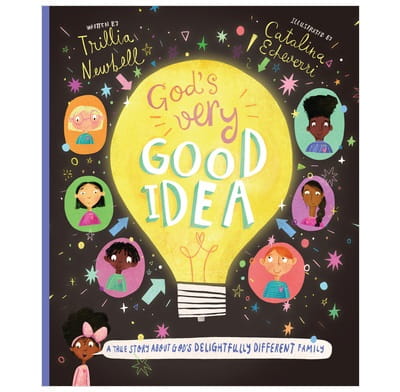4 Reasons Why You Shouldn’t Teach Your Kids to be Colorblind

Can you imagine wanting to be colorblind? And yet I hear that all the time…
When I speak with adults about ethnic and racial diversity it’s not long before I hear this: “I don’t see color,” they say. “I’m colorblind! My parents taught me not to see color.”
This phrase is a way of expressing that all people are seen as just that, people. I’ve also heard colorblindness cited as a defense against racism, “I’m not racist. I love all people. Actually, I’m colorblind.”
But I disagree.
Although people confidently make the claim, I’d like to suggest that we are not colorblind, we don’t need to be colorblind, and we actually should strive to not be colorblind. Because it leads us in the wrong direction. Instead, I want to encourage us to be colorsmart. Here’s why…
1. It’s not realistic
I’m an African-American woman. I cannot —and crucially have no desire to—erase the fact that I am how God made me. There is no hiding my milky-brown, freckled skin. I am who I am. When I walk into a room and I am the only black woman, it’s obvious. There’s no benefit in pretending. I know it; you know it; we all know it. It’s ridiculous to pretend otherwise.
What I’m not saying, however, is that we need to act awkward around each other. If we’ve embraced the fact that God has created us as equals, there’s no need or reason for that awkwardness. If someone who is culturally or ethnically different from you comes around, it is unrealistic, unhelpful and possibly unloving to pretend that you don’t notice. So, when your child says, “Mommy why is that woman wearing a dot on her forehead?” Instead of asking them to be quiet out of embarrassment, the colorsmart approach is to take that question as an opportunity to positively explain her different, unique culture.
2. It misses the opportunity to celebrate God’s good design
Being colorblind seeks to ignore or flatten the differences between us. But being colorsmart enables us to see people as made in the image of God just like us—acknowledging the beauty of our differences. As God’s image bearers, we all have similarities. God doesn’t discriminate against certain people groups in his design. We are all equally created to reflect aspects of our Creator God. However, God does create each and every one of us uniquely. This can be acknowledged and celebrated rather than fearfully ignored.
We are not all the same in regards to skin color, interests, likes, gifts and desires. God has created us different for a purpose, namely his glory. So, instead of striving to be colorblind, let’s be colorsmart—recognizing these differences in ways that express genuine interest in and love for our neighbor, and being thankful for the beauty of God’s amazing design.
Don’t we want our kids to also celebrate who they are as designed by God? We want children to celebrate that God created them and celebrate that God created all people. That is the beautiful reality of creation.
3. The gospel is for all nations
The most important reason to be colorsmart is that the gospel is for all nations. God celebrates his creation and redemption of all people. The Bible tells us that we sinned, putting everything out of order—part of which is the racial division hatred that we so tragically see throughout history. But Scripture shows us how our God is working toward the redemption of all people through Christ. And he is glorified now when his people from all nations worship him together. We can see the fulfillment of his promise to redeem every tribe, tongue and nation, when we gather, fellowship and worship with those who are different than us.
4. We will rejoice in color forever
We should not be colorblind because God doesn’t erase these distinctions in Scripture, and it is the ultimate reality of our life in eternity. Revelation 5 shows us a beautiful picture of every color, tribe, tongue and nation worshipping together in eternity. It is the work of the Lord to reconcile all things—first in reconciling us to himself, then us to one another. We will spend eternity in a New Creation filled—gloriously!—with people of all colors.
So, instead of pretending like we are colorblind, let’s celebrate God’s creation and be colorsmart. Like his glorious vision of the last day, let’s see the beauty of his people who he has created uniquely. Instead of pretending there are no differences, let’s get to know one another. The pursuit of ethnic harmony doesn’t require us to ignore how God uniquely designed us. When we celebrate our differences, I believe we reflect what God has demonstrated in his Word. Our children are watching and learning from us, and they can grow to love the nations, and to reach out to them with the gospel of grace, as we embrace our God-given differences.
Check out this other great video from Trillia: How Should Parents Speak to Their Children About the News?
This article originally appeared on TheGoodBook.com. Used with permission.

Trillia J. Newbell's writings on issues of faith, family, and diversity have been published in the Knoxville News-Sentinel and Relevant Magazine, as well as on numerous websites, such as Desiring God, Christianity Today, and the Gospel Coalition. She is the director of community outreach for the Ethics and Religious Liberty Commission of the Southern Baptist Convention. Trillia lives near Nashville with her husband, Thern, and their children.
Image courtesy: ©Thinkstock/Rawpixel
Publication date: August 14, 2017
Originally published August 14, 2017.







